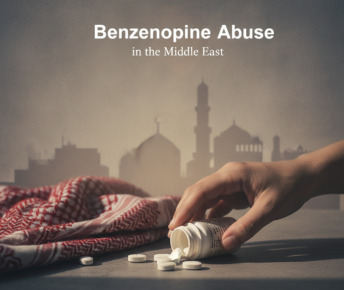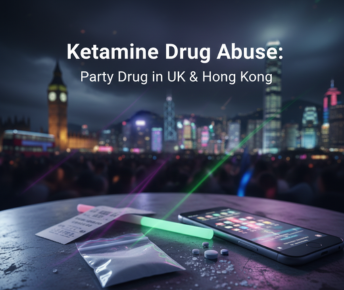In most countries, Mandrax abuse is a thing of the past. But in India and some countries in Africa, Mandrax abuse is still rife. In this blog, we look at exactly what Mandrax is and go into depth on everything you need to know about this drug.
If you are suffering from Mandrax addiction, you are not alone. Samarpan Recovery has the expertise and experience needed to help you overcome this affliction. For more information, please contact us.
What is Mandrax?
Mandrax is a highly addictive sedative drug that was originally prescribed as a sedative, sleep aid, and muscle relaxant. Its active ingredient is methaqualone, which is a member of the quinazolinone class of drugs. When Mandrax is used, it increases the activity of the GABA receptors within the brain and nervous system. This causes blood pressure, breath rate, and pulse rate to slow, which causes relaxation in users.
Methaqualone is no longer available legally, meaning that all usage of Mandrax is now illicit.
History of Mandrax
Mandrax was first synthesized in India in 1951 by Indian Kishore Kacker and Syed Husain Zaheer. It soon became the most commonly prescribed sedative in many countries around the world. The public believed that this new drug was less harmful than barbiturates, which had previously been the most popular sedatives and were banned due to their addictive potential and risk of death through overdose.
Mandrax was mainly marketed under the brand names Quaalude, Sopor, and Mandrax, and was usually manufactured in preparations that contained either 300mg of methaqualone or 250mg of methaqualone and 25mg diphenhydramine. This medication was marketed heavily and was readily prescribed by doctors, carrying no stigma with use.
In the 1960s and 1970s, large swathes of people began finding that if you took large doses of Mandrax and resisted the urge to sleep you would get high. Levels of abuse soared, and governments began to impose tighter regulations to limit illicit misuse. At that time, Mandrax was known as “ludes”, “soapers” and “disco biscuits” in the United States and Canada, while it was called “mandrakes” and “mandies” in the United Kingdom, Australia, and New Zealand.
The drug became popular among musicians like The Rolling Stones, David Bowie, and Frank Zappa. The last of these featured “ludes” in his song “Pygmy Twylyte”, which spoke of “hurtin’ for sleep in the Quaalude moonlight.”
Widespread illicit use continued, and as a result, the United States and other countries banned Mandrax for sale in any form in the early 1980s. The DEA then began a campaign that encouraged any manufacturers of methaqualone to stop making the drug, a course of action that successfully put a stop to the world’s legal supply of Mandrax.
Mandrax continues to be popular in South Africa and India, where it is now manufactured in clandestine labs.
Mandrax features in the 2013 film “The Wolf of Wall Street”, where the main character, played by Leonardo DiCaprio, becomes heavily addicted to Mandrax. In one memorable scene which outlines some of the risks involved with Mandrax, Leo causes havoc in his neighborhood, totaling several cars including his own, while believing that he got home unscathed.
In November 2016, police conducted the largest seizure of illicit Mandrax ever found, when they uncovered 23,320 kilograms of the drug in the city of Udaipur in Rajasthan. The drug was destined for African countries including Mozambique, Kenya, and Malawi.
How is Mandrax Used?
While Mandrax was originally manufactured in tablets that were intended to be swallowed, most users now crush the tablets and smoke them in a “white pipe”, which allows for quicker onset. This practice can lead to emphysema and other chronic lung disorders.
Some users inject Mandrax, which creates a risk of infections such as HIV and Hepatitis C. Intravenous Mandrax users also run the risk of damaging veins, which can sometimes lead to amputation.
Effects of Mandrax
The effects that drug users take this drug for include:
- Reduction in anxiety
- Happiness
- Calmness
- Euphoria
- Increased libido
- Deep relaxation
Side Effects of Mandrax
Side effects of Mandrax include but are not limited to
- Dizziness
- Nausea
- Vomiting
- Fatigue
- Itching
- Sweating
- Dry mouth
- Seizures
- Reduced heart rate
- Slowed breathing
- Diarrhea
- Rashes
- Death
Dangers of Mandrax
Like all illicit drugs, Mandrax use comes with a variety of dangers. Here are some of them.
Risk of Addiction
Mandrax is an addictive drug, which over time will create dependence in users. If someone continues to take Mandrax regularly for a long period of time, it will become difficult to stop. Mandrax comes with a withdrawal profile that includes anxiety, depression, and fatal seizures when its use is ceased.
Because of this, users should not attempt to stop using Mandrax by themselves. Always consult the guidance of a trained professional, who can help you to understand the withdrawal process. Medication may be necessary to help stabilize those who stop using this drug.
Risk of Injury
Mandrax causes motor coordination to become seriously impaired. It also causes inhibitions to be lowered. This is a dangerous combination, as it can cause users to believe that they have more control over their bodies than they actually do while under the influence.
Users of this drug regularly hurt themselves either by stumbling around or by attempting to operate a vehicle high. Incidents like these have sometimes proved fatal.
Risk of Long-Term Harm to Body and Mind
Repeated misuse of Mandrax can cause damage to the body and mind. This includes liver damage and permanent brain damage. Note that much of the brain damage caused by Mandrax is reversible, following an extended period of abstinence.
Risk of Overdose
If you take Mandrax, you run the risk of overdosing. Overdose of Mandrax can prove fatal. You do not know how your body will react to this drug.
Risk of Unknown Dosage and Adulterated Mandrax
As methaqualone is no longer manufactured in factories legally, all Mandrax that you find is now illicitly made. This means that you cannot be sure of the dose of Mandrax that you are taking. Even if someone who gives you Mandrax claims to know how much methaqualone is in the tablet they give you, you cannot be sure. This poses an increased risk of overdose.
There is also the danger of being given Mandrax which contains ingredients other than methaqualone. Mandrax has been found to contain other sedatives, such as alprazolam or diazepam. Even more worrying, opioids such as fentanyl have also recently appeared in Mandrax. Synthetic opioids like fentanyl are incredibly dangerous, particularly when combined with other downers.
Risk of Dangerous Sexual Practices
As Mandrax increases libido and decreases inhibitions, users often end up having unprotected sex, putting themselves at risk of STDs like chlamydia, herpes, and HIV. This is particularly dangerous in regions where these STDs are prevalent.
Getting Help for Mandrax Addiction
If you or a loved one has become addicted to Mandrax, it can be difficult to know where to turn. This drug can turn someone you once knew into a person you no longer recognize. It can all seem pretty hopeless.
Fortunately, there is help available, and it is possible for anyone who is addicted to Mandrax to make a complete recovery. At Samarpan, we understand that the key to addressing Mandrax addiction is getting to the root of the issue. Please give us a call if you would like to know more.
























 Yes, many offer serene environments and solid therapeutic frameworks. However, quality varies, so it’s essential to research accreditation, staff credentials, and therapeutic depth.
Yes, many offer serene environments and solid therapeutic frameworks. However, quality varies, so it’s essential to research accreditation, staff credentials, and therapeutic depth.




